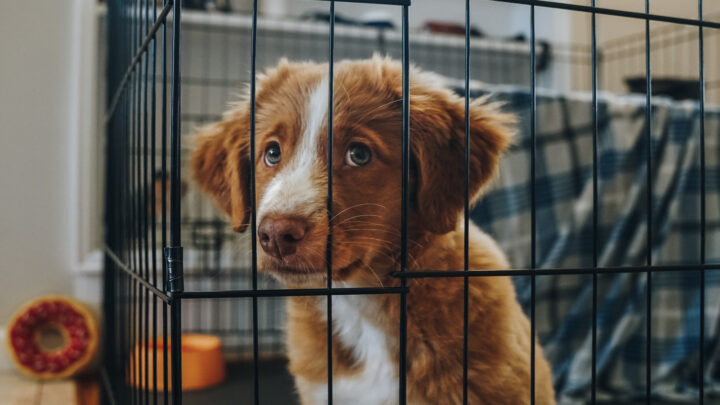The latest information about Should You Let Your Puppy Cry In The Crate that you need can be found in this article, all of which we have summarized well.

Should You Let Your Puppy Cry in the Crate?
As a new puppy owner, I was determined to crate train my furry friend. After all, I’d heard that crating could help prevent accidents, provide a safe space, and establish boundaries. However, when it came time to put my puppy in the crate, I was met with a chorus of heart-wrenching cries. Should I ignore the cries and persevere with crate training, or give in to my puppy’s distress?
Navigating this decision can be a minefield for puppy owners. To help you make an informed choice, let’s delve into the pros and cons of letting your puppy cry in the crate, as well as research-based advice from experts and experienced trainers.
Understanding the Pros and Cons
Benefits of letting your puppy cry in the crate:
- Teaches self-soothing: Puppies need to learn to self-soothe in order to become independent and well-adjusted dogs.
- Establishes boundaries: Crate training helps establish clear boundaries for your puppy, teaching them where their safe space is.
- Prevents accidents: When puppies cry in their crate, they are essentially “telling” you that they need to go to the bathroom. By ignoring the crying, you can prevent accidents in your home.
Drawbacks of letting your puppy cry in the crate:
- Stress and anxiety: Extended periods of crying can cause significant stress and anxiety in puppies.
- Damage to the bond: Ignoring your puppy’s crying can damage the trust and bond between you.
- Learned helplessness: Puppies who are left to cry in their crate may eventually learn that their cries are futile, leading to learned helplessness.
Explanation and Expert Advice
While letting your puppy cry in the crate may have some benefits, it’s important to note that experts strongly advise against extended periods of crying. The American Kennel Club (AKC) recommends that puppies should not be left to cry for more than 15-20 minutes at a time. Beyond this point, crying becomes counterproductive and can lead to negative consequences for your puppy.
Instead, experts recommend using positive reinforcement methods to crate train your puppy. This involves rewarding your puppy for calm and quiet behavior in the crate, and gradually increasing the duration of time they spend inside. By making crate training a positive experience, you can help your puppy develop a healthy and safe relationship with their crate.
Tips and Expert Advice for Crate Training
- Make the crate a positive space: Place comfortable bedding, toys, and treats inside the crate to make it a welcoming place for your puppy.
- Start slowly: Don’t force your puppy into the crate all at once. Start by leaving the crate open and letting your puppy explore it at their own pace.
- Use high-value treats: Reward your puppy with their favorite treats for calm and quiet behavior in the crate.
- Stay calm and patient: Crate training takes time and consistency. Stay patient with your puppy and don’t get discouraged if they have setbacks.
- Seek professional help: If you are having difficulty crate training your puppy, don’t hesitate to seek professional help from a certified dog trainer or veterinarian.
General FAQ on Crate Training
Q: How long can I leave my puppy in the crate?
A: Puppies under 6 months old should not be left in the crate for more than 4 hours at a time. Older puppies can gradually be left in the crate for longer periods, up to 8 hours maximum.
Q: What should I do if my puppy cries in the crate?
A: If your puppy cries for more than 15-20 minutes, take them out of the crate and try again later. Use positive reinforcement methods to reward your puppy for calm and quiet behavior.
Q: What if my puppy refuses to go in the crate?
A: If your puppy is resisting the crate, try making it more positive by placing treats and toys inside. You can also try feeding your puppy their meals in the crate to help them associate it with something positive.
Conclusion
Crate training can be an effective way to teach your puppy boundaries, prevent accidents, and provide them with a safe and secure space. However, it’s important to remember that ignoring your puppy’s cries for extended periods of time can be harmful to their well-being. By using positive reinforcement methods and following expert advice, you can create a positive and rewarding crate training experience for your furry friend.
Are you considering crate training your puppy? Do you have any concerns or questions about the process? Share your thoughts and experiences in the comments below!

Image: animalia-life.club
Thank you for visiting our website and taking the time to read Should You Let Your Puppy Cry In The Crate. We hope you find benefits from Should You Let Your Puppy Cry In The Crate.